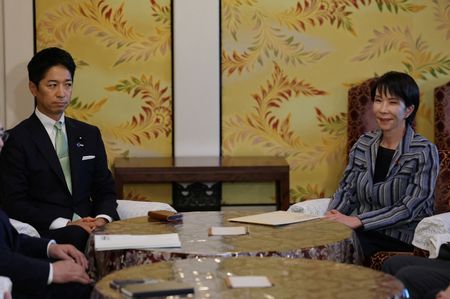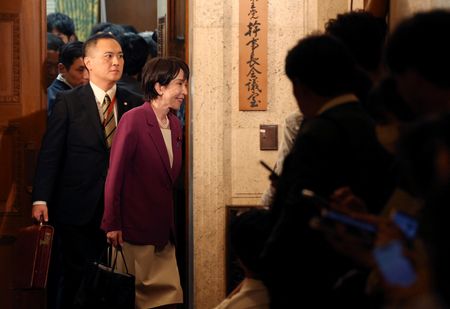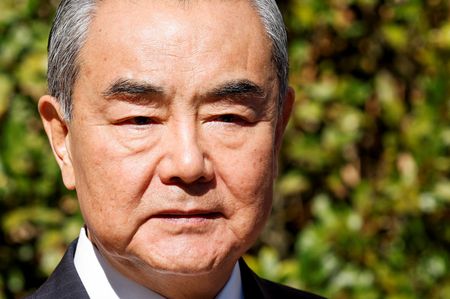By Kiyoshi Takenaka
TOKYO (Reuters) -Liberal Democratic Party leader Sanae Takaichi’s bid to become Japan’s first female prime minister regained momentum this week, as alliance discussions with another political party moved forward.
After the Komeito Party ended their 26-year partnership last week, the LDP – which has ruled Japan for almost all of its post-war history – has been in talks with the right-leaning Japan Innovation Party, known as Ishin.
The parliamentary vote to pick the next premier is scheduled for Tuesday. Here’s how the election works and how votes might stack up for Takaichi.
HOW THE POLL WORKS
The candidate who wins the majority of votes cast by the lower and upper houses of parliament will take the top job. If no one secures a simple majority, there will be a run-off poll between the two candidates with the most votes.
If there is a disagreement between the two chambers, the choice of the lower house prevails.
WHAT TAKAICHI NEEDS TO WIN
The LDP holds 196 of the 465 seats in the lower house, well short of the 233 needed for a simple majority. If Ishin joins hands with the LDP, their combined number is 231. To get the two extra votes, the LDP is asking for cooperation from smaller new parties.
It’s not clear if Ishin will become a formal coalition partner or just lend its political support.
WILL THERE BE OTHER CONTENDERS?
That remains uncertain. The Constitutional Democratic Party of Japan (CDPJ), which holds 148 seats, has proposed that opposition parties jointly field one candidate, saying that person could be Yuichiro Tamaki, head of the Democratic Party for the People (DPFP).
If the CDPJ joins hands with the DPFP, which has 27 seats, and Komeito, which has 24 seats, the three would have more than the LDP’s 196 but not enough for a simple majority.
DPFP’s Tamaki has said, however, his party and the CDPJ differ significantly on issues such as nuclear energy and security, making an alliance difficult.
(Reporting by Kiyoshi Takenaka; Editing by Edwina Gibbs)









